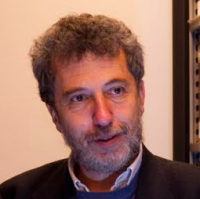Vaccines and the distortion of the Holocaust
The Monitoring Centre for anti-Semitism of the Center of Contemporary Jewish Documentation has been denouncing anti-vax protestors’ misuse of the Nazi anti-Jewish symbols for more than a year. In the last few days, this issue has suddenly become an “emergency” that everyone has started to reckon with, as the use of these symbols has been shifted from social media to physical public spaces. So welcome, everyone! Rise and shine!
Of course, the dynamics we are witnessing are partially paradoxical. During the protests, yellow stars are hoisted and the government is compared to Hitler and Nazism and on the other hand these demonstrations are openly supported and attended by right-wing groups and Italian neo-Fascists, that have always shown sympathy towards Nazism and Fascism and often used the racist and anti-Semitic rhetoric that results in these ideologies. Something does not add up.
However, we would make a serious mistake by reducing these protests to mere episodes of anti-Semitism, which sometimes do occur and in a most vivid manner. I think the reflections should be broadened by taking other elements into account.
First and foremost, we ought to ask ourselves why are those symbols used. I think that, after more than twenty years of the Holocaust Remembrance Day, the collective imagination might have developed a distorted and problematic idea of the Jew as a victim. This is a prototype that on a symbolic level can be perceived straight away and is thus used in common dissent protests in public spaces. Such episodes would not have been possible in the Fifties or the Sixties, back when the yellow star and the gates of Auschwitz were not reckoned in their dramatic weight. If this is true, it means that all the criticism of the Day of Remembrance and of its effectiveness is partly exaggerated.
The effort that has been made has evidently brought about a new and original form of awareness of what happened to the Jews in Europe during the Second World War. Nowadays everyone knows the Holocaust actually took place, and that is a good thing. Negationism is in fact on the wane.
Instead, what is alarmingly emerging is the “distortion” of the Holocaust and of its symbols. Indeed, it is unacceptable that someone who feels in some way discriminated could compare themselves to the persecution of the Jews during the extermination.
Therefore, it becomes necessary to deepen and extend to all levels of society and first of all in schools the precise knowledge of what happened in the process of persecution of rights, concentration in the Polish ghettos, deportation and disposal elimination of millions of people in extermination camps. In the last few months IHRA has published an important document containing advice on the subject of distortion of the Holocaust. Its translation into Italian and its partial adaptation have been carried out by the Italian delegation in IHRA and in this context it becomes a particularly useful tool, which complements the guidelines on the teaching of the Holocaust whose Italian version will be published shortly. Ultimately, talking about the Shoah is important if it is done with awareness; distorting its meaning by projecting it onto contemporary scenarios of political and social dialectics is dangerous and misleading.
* Director of the CDEC Foundation
Translated by Gianluca Pace and revised by Antonella Losavio, students at the Advanced School for Interpreters and Translators of the University of Trieste, interns at the newspaper office of the Union of the Italian Jewish Communities.

